Because of its striking appearance the Canvasback is often referred to as the “aristocrat” of ducks. But as you’ll see, it’s difficult to look aristocratic with your face, head and neck slathered in mud.
This species often feeds on the muddy bottom of ponds, consuming both plant and animal material (omnivorous) by sieving or filtering the mud through its bill. It dives vertically straight down to the bottom and feeds in the mud in a perpendicular position.
This is the male Canvasback. The wedge-shaped head and sloping bill of the species are uniquely adapted to probing into the mud with the least resistance possible.
As you can see, this male has visited the mud before. From the angle of the head as it enters the water you can see that it’s the intention of the bird to go straight down.
When they come up they orient their bodies horizontally again and passively float to the surface (usually very close to where they entered it) using their positive buoyancy, which means that they break the surface almost like a submarine – in a mostly horizontal position.
This bird is just breaking the surface. Besides the thick layer of mud on its head and neck it still has a thin layer of muddy water over its entire body and it’s already begun to strain the mud in its bill as indicated by the stream of muddy water coming out.
They often look pretty silly when they first come up.
This shot gives a pretty good look at the mud in the bill after much of the water has been strained out.
They try to keep as much of the mud off their heads as possible but it’s a losing proposition…
because they just go down and do it all over again.
These birds are very protective of their feeding areas. At first glance this may look like a love-fest but it’s far from that. The male on the left is an interloper who came into the feeding area of the first bird. These two are pushing against each other aggressively. They circled in the water as they did so and it went on for quite a while…
but it eventually transformed into an all-out fight. (sorry about the composition, I had no more room on the right).
As is often the case in aggressive encounters between birds, it was the interloper who was driven off. Then the winning male calmly went back to feeding.
Ron
Note: I’ve posted about some of this behavior in Canvasbacks long ago but only one of these images was used previously.


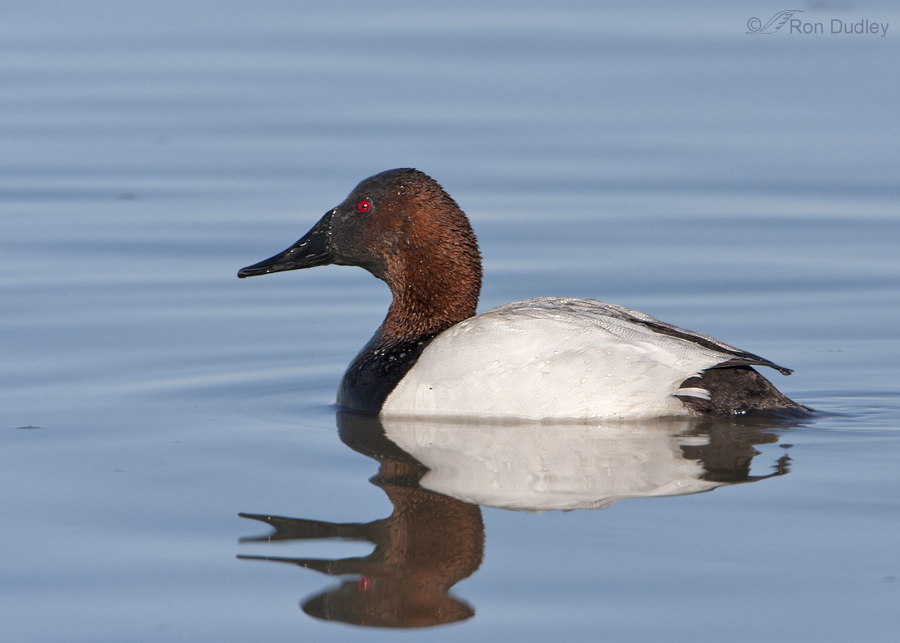
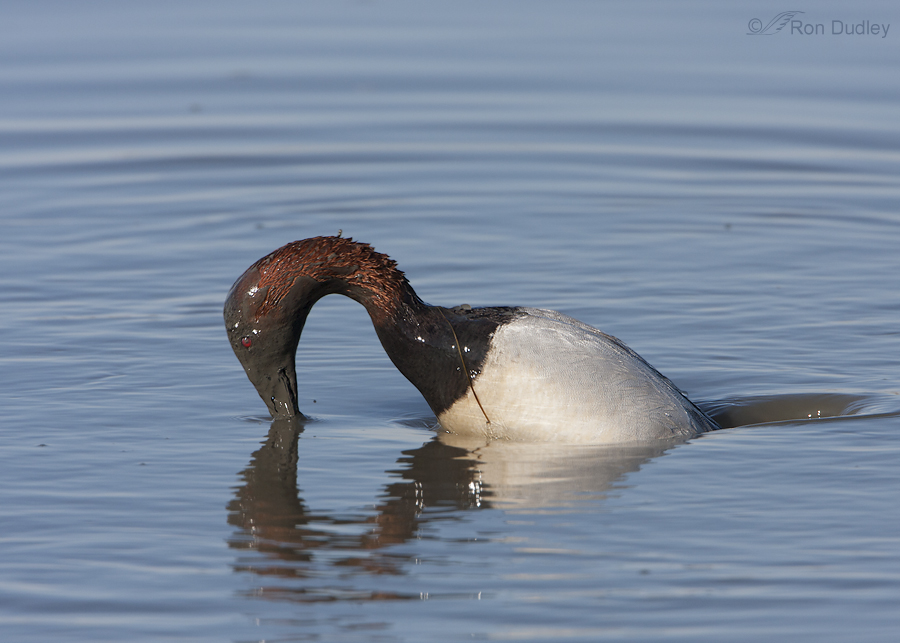
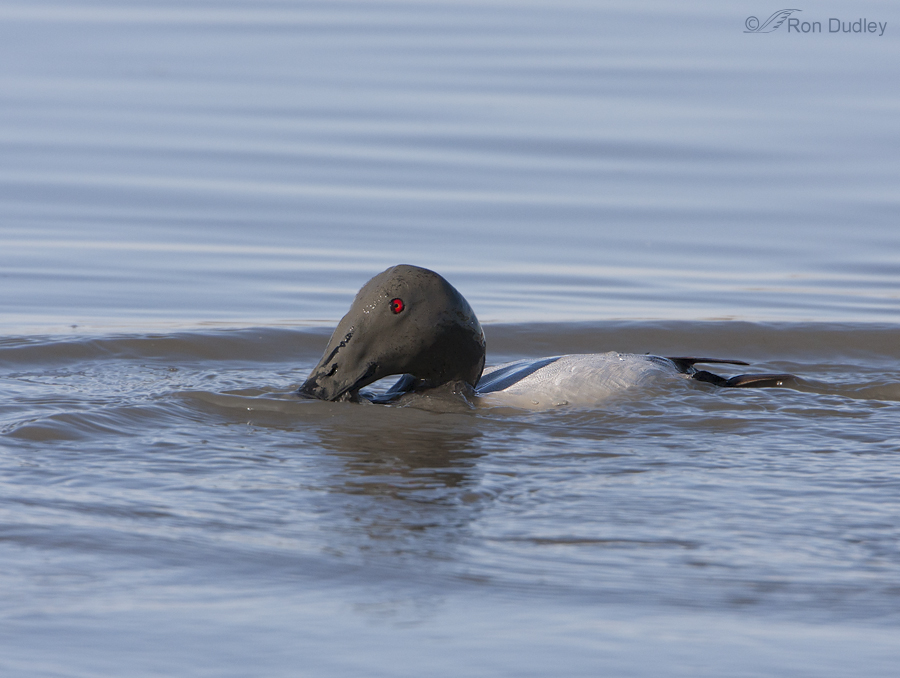
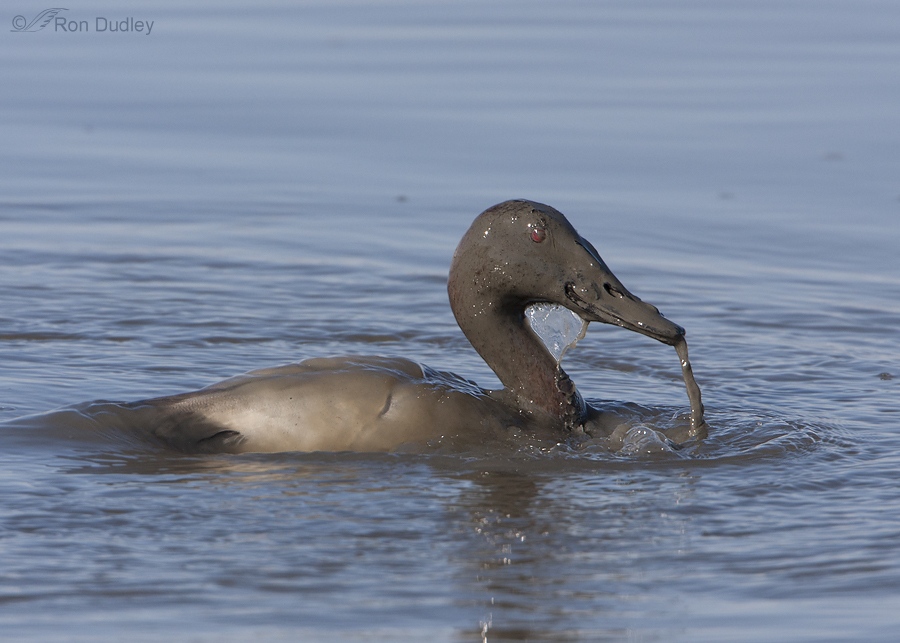
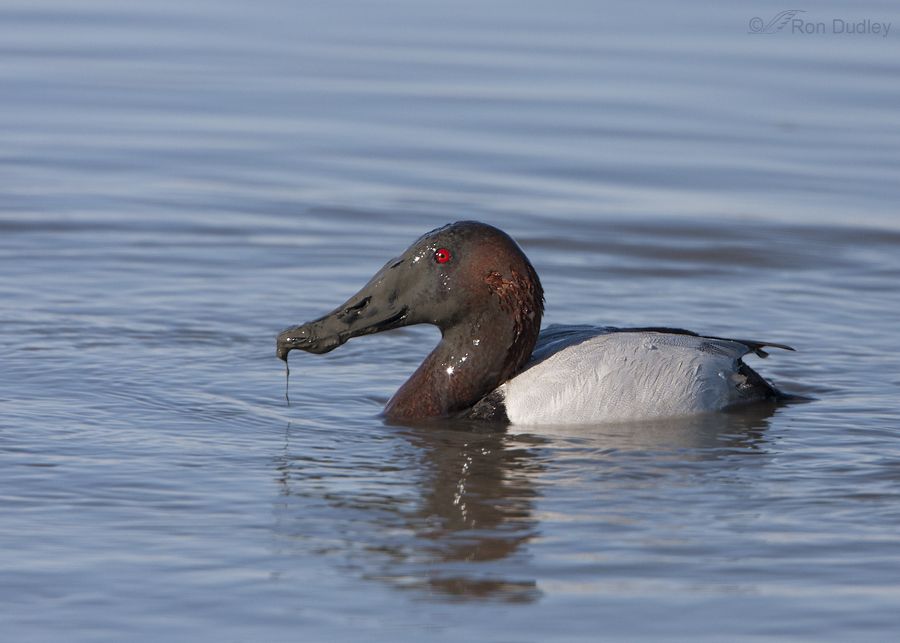
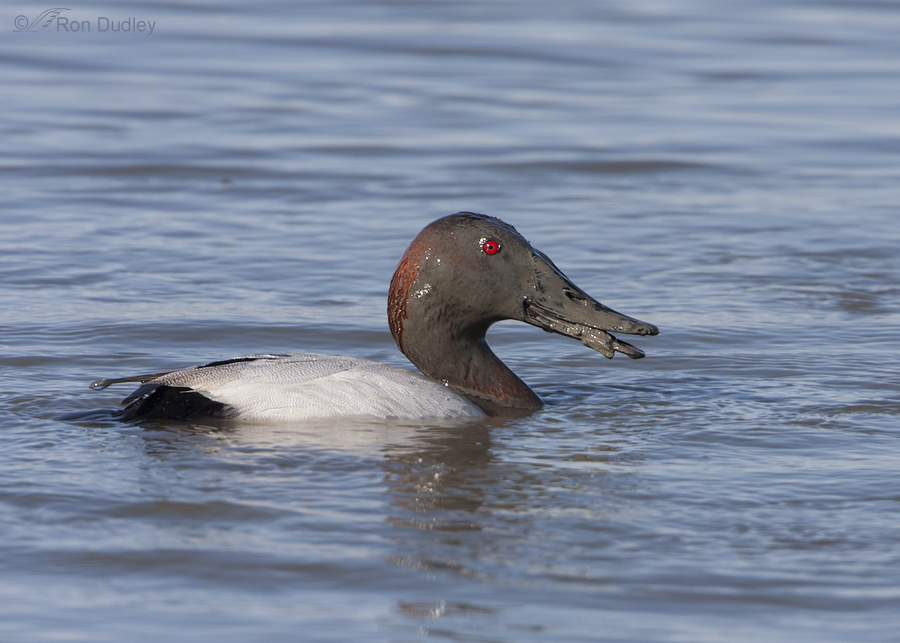

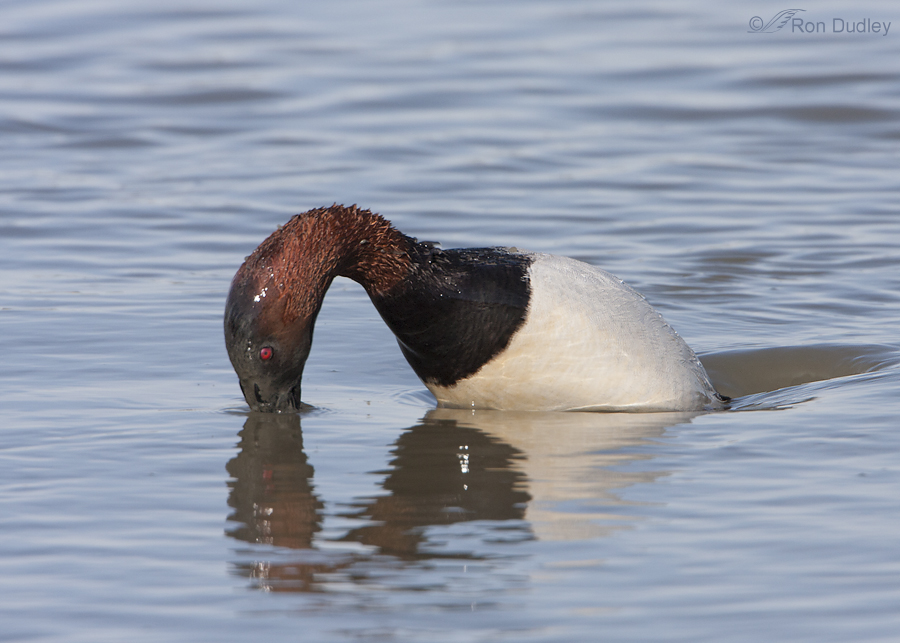
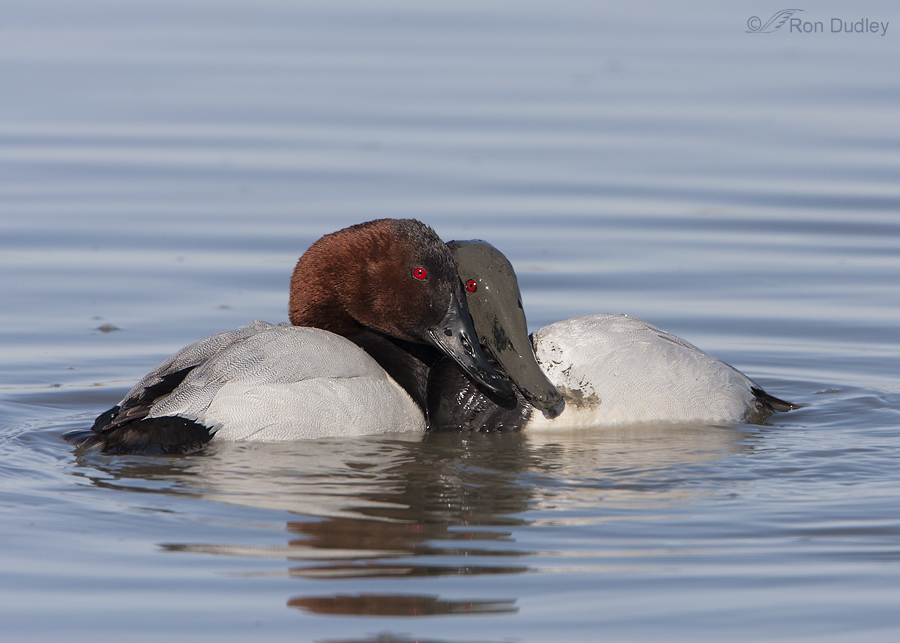
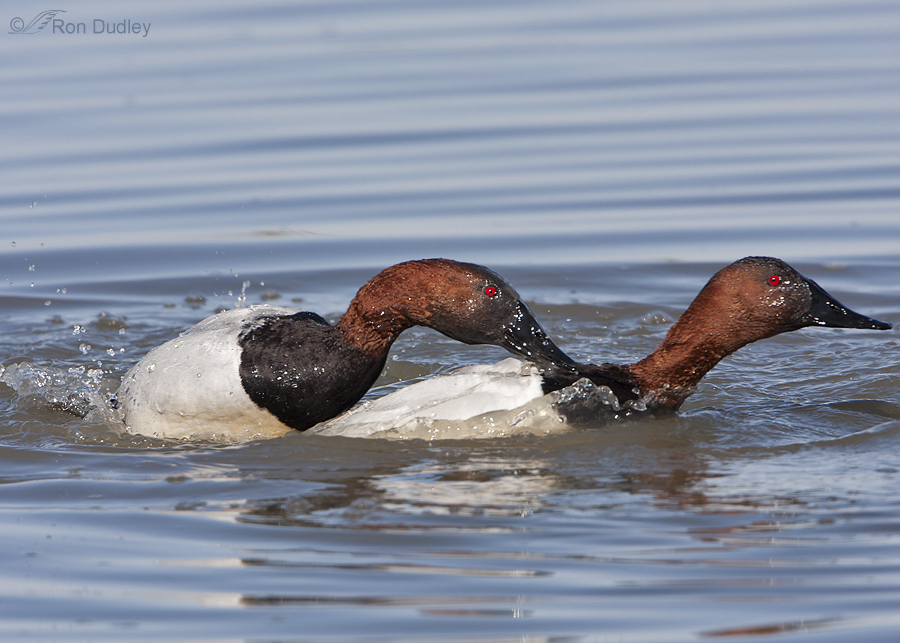
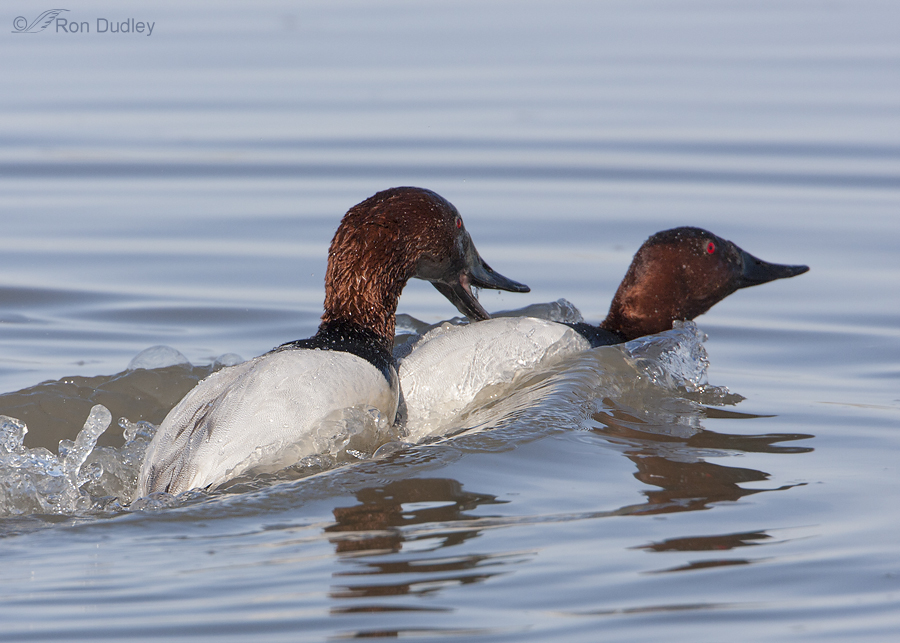
I wondered what these divers were finding to eat and was surprised to learn how nutritious mud can be. Makes sense…small critters, decayed plant material, etc. Don’t notice that mud pack facials do much for them, but then didn’t see them “before”….love the ruby eyes.
Super shots ad very interesting behavior. Thanks for sharing!
The Canvasback (a remarkably UNaristocratic name) takes the expression ‘red-eye’ to a whole new level. Frivolous comments aside, this is an amazing sequence – thank you so much.
Ron, you catch the most amazing behavior ever! It’s amazing to see that Canvasback dipped in mud, and then subtly getting aggressive with the other one. Amazing!
Oh my gosh! This is so interesting. I have never seen anything like this! In addition to your always great photography, I appreciate your explanations. I would have figured the two canvasbacks were courting, but apparently not. I don’t think I have ever seen any here if So Calif., at least the L.A, Orange County area.
AMAZING!!! I know it’s 99% talent but are you photoshop certified as well? I know first and formost good photography starts with a good photograph first and knowing the software second.
Big fan of your work for sure. Keep up the good work and if you ever start any workshops, I’ll be the first to sign up.
Thanks for sharing
What an amazing set of photos! If the ‘love fest’ photo had really been that I would have questioned the sanity of the female in question…
Ron, as usual your post is just incredible. We learn a lot every time. Since the canvasback is seen only a couple of times every year in Québec, we are not used to it. This post is a real revelation for me about its feeding behavior. Many thanks again for the sharing.
Thanks, Laval. I don’t see a lot of these ducks either – they seem to be fairly common some years but most years I see very few and they’re usually far away.
Now those are great shots!!
I have never seen them covered from bill to head with mud! You here this or read about it, but without seeing it one can’t really appreciate what these birds do for a living! Many thanks for sharing these shots!
And thank you for appreciating them, Dick.